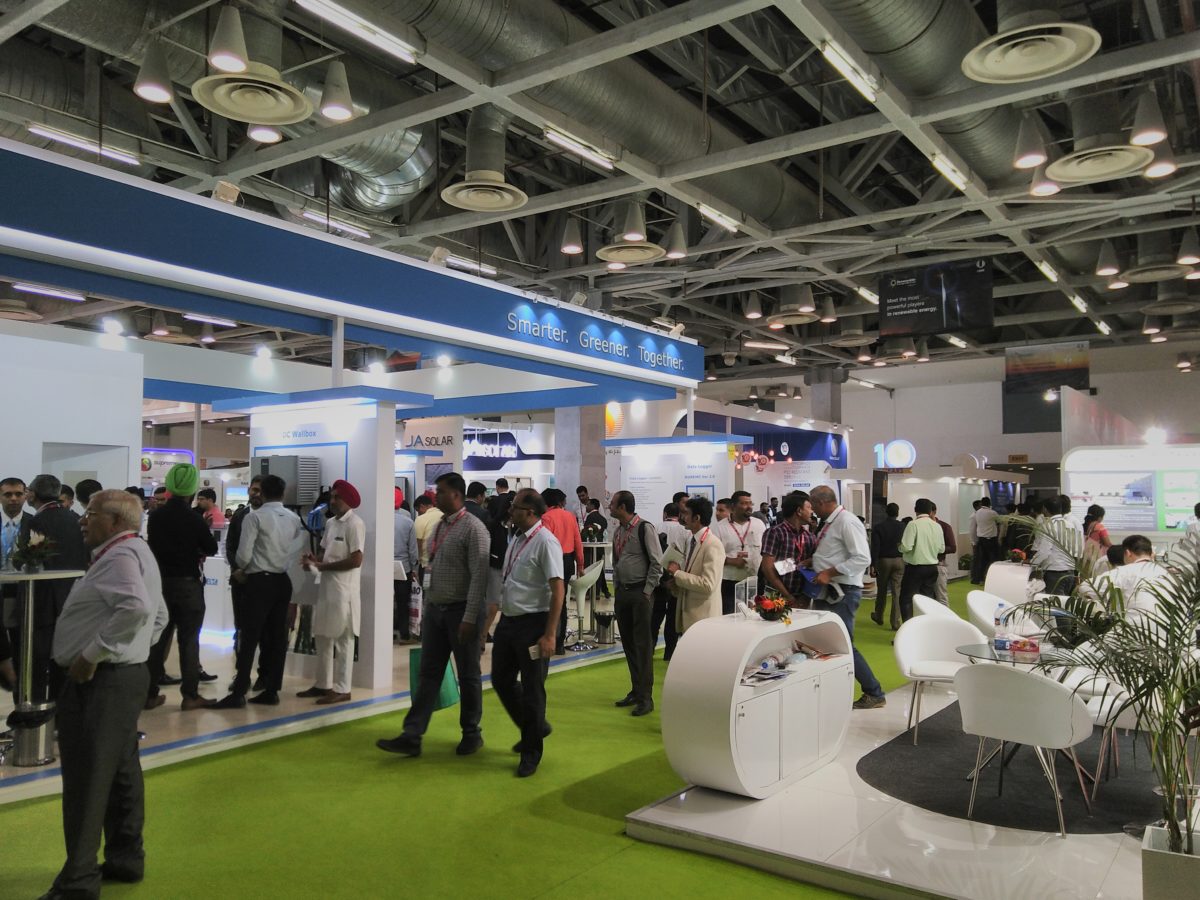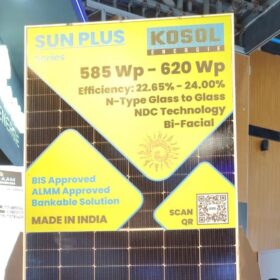At the opening session of the EU-India Clean Energy and Climate Days, and Business Beyond Borders conference, held on the sidelines of the REI 2018 exhibition, European and Indian delegates spoke of the great potential for the two parties to collaborate in the field of renewable energy.
The goal of the partnership is to translate the 2015 Paris Agreement and Sustainable Goals into concrete action. Henriette Færgemann, Counselor Environment Energy & Climate Change at EU Delegation to India, in her welcome address, said that over 80 European businesses are currently at REI, with the aim of forming concrete partnerships with Indian players.
The dynamic CEO for the Council on Energy, Environment and Water (CEEW), Arunabha Ghosh then took to the podium to outline his vision on priorities for EU – India clean energy cooperation.
4 basic vows
He began by stating while there have been successes in installing over 70 GW of renewable energy in India, and investing over $10 billion in the past four years, this figure, on a global scale, is still a drop in the water. Indeed, he said that India’s investment still represents around just 3% of global renewable investments.
“We are still not getting the investment and technical partnerships to push India into a different league,” he said, adding that the money is not flowing where the sun shines and the wind blows.
He went on to ask: “Will we reach 175 GW by 2022?” This is not certain, he said, “but is it even the right question?” While it may serve as a “lightening rod” for attracting interest from investors and policy markets, demonstrating that India’s goals are not a “flash in a pan”, it would be better to ask, “Is there a chance policies will be reversed, or commitments lessened?”
He outlined four basic vows, in order to inject real power India’s renewables market:
1. No backsliding on policy and targets: India must create demand for renewables on a national, state, district, city and individual level, said Ghosh. It should not be seen as a feel good industry, but rather one that will provide infrastructure;
2. No binaries: India has gotten into a trap of thinking of renewable energy being for the manufacturer, for the developer, or for the investor. These are all individual stories, he said, however they don’t lead to a sustainable push for renewables. 175 GW is the floor, not the ceiling, he continued, but the country needs to establish both a manufacturing and a technology base, and joint ventures with companies abroad, in addition to de-risking the market for developers. While the safeguard tariffs may create domestic manufacturing, and trigger initial investment, more needs to be done. India needs to think about not just cell manufacturing, but rather the whole supply chain, all of which is value added;
3. No failed contracts: India has demonstrated since 2010, said Ghosh, that it can have a transparent market via reverse auctions to drive tariffs down. This only works, however, if developers or investors know that the bids will be signed, honored and paid. “Sellers beware!” he said, adding that by protecting the past (read poor balance sheets of utilities), the future will not be secured; and
4. No lost electrons: Once a power purchase agreement is signed, a solar project installed, and investment secured, companies are locked into a debt agreement. This comes with technical risks – a project can be installed quickly, but it takes time to set up green energy corridors for grids; and commercial risks – if the power companies are not buying the generated power. These risks represent lost electrons, in a country where many still lack access to electricity, or receive poor electricity services.
Market-friendly principles
Overall, said Ghosh, there are three legs to the stool: policy, technical, and finance, to de-risk investment.
He went on to say that there is a very broad canvas for European and Indian companies to operate on, including in the areas of utility solar projects, storage, rooftop PV, minigrids, off-grid projects and in the area of energy efficiency.
Stage one of any engagement, he said, is the creation of a partner network and matchmaking. Here, the key message for Europe is: “India is the largest clean energy market in the world that will operate on market friendly principles.” It may not be there today, Ghosh said, but it will get there. India’s renewables industry is the fastest growing in the world, he continued. “Take this message back to Europe.”
Stage two will need to see the establishment of technical assistance and building demand. There are already many prospects on the solar park side, he said, where international IPPs account for 45% of sourced capacity over the past four years. The sector is attracting large amounts of investment, a disproportinate amount of which is international. However, more could be done in building demand aggregation for minigrids, and energy efficiency, for instance.
Finally, stage three will need three big moves, continued Ghosh: innovation and finance, innovation and business models, and innovation and technology.
While the European Investment Bank and other investors offer long credit lines, there is a need for more help in co-financing for de-risking projects, securitization and deepening the Indian green bond market.
Meanwhile, the market needs to shift away from solar parks to rooftop systems. Here, he cited an example of the CEEW working with utilities in Delhi to create new business opportunities, without taking customers away from the utilities.
Furthermore, the industry needs to think of renewables beyond electricity, he said. This should include decarbonizing the industrial sector, specifically by looking at renewables for industrial heat. This will open up a whole new area of cooperation, he stated.
Finally, he mentioned the circular economy, and end of life scenarios for equipment like batteries and solar panels. Here too, he concluded, the EU could cooperate with India.
Watch out for more coverage from REI 2018, including from pv magazine’s Roundtable events, held yesterday and today.
This content is protected by copyright and may not be reused. If you want to cooperate with us and would like to reuse some of our content, please contact: editors@pv-magazine.com.









By submitting this form you agree to pv magazine using your data for the purposes of publishing your comment.
Your personal data will only be disclosed or otherwise transmitted to third parties for the purposes of spam filtering or if this is necessary for technical maintenance of the website. Any other transfer to third parties will not take place unless this is justified on the basis of applicable data protection regulations or if pv magazine is legally obliged to do so.
You may revoke this consent at any time with effect for the future, in which case your personal data will be deleted immediately. Otherwise, your data will be deleted if pv magazine has processed your request or the purpose of data storage is fulfilled.
Further information on data privacy can be found in our Data Protection Policy.